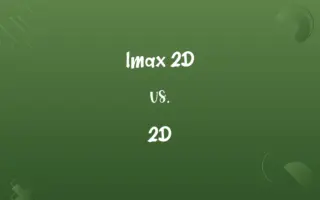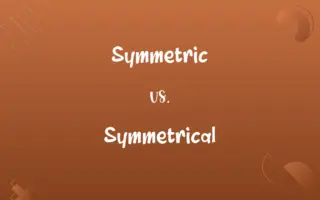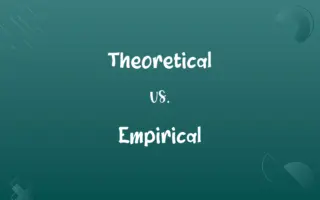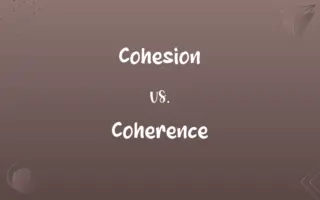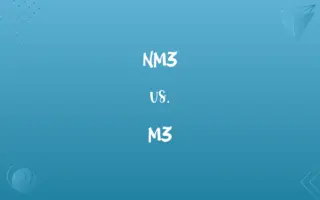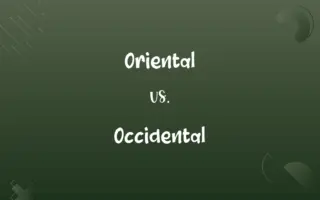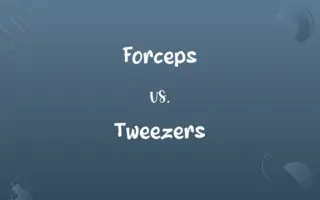B-tree vs. Binary tree: Know the Difference

By Shumaila Saeed || Published on February 12, 2024
B-tree is a self-balancing tree data structure that maintains sorted data and allows searches, insertions, and deletions in logarithmic time; a Binary tree is a hierarchical structure with each node having at most two children.
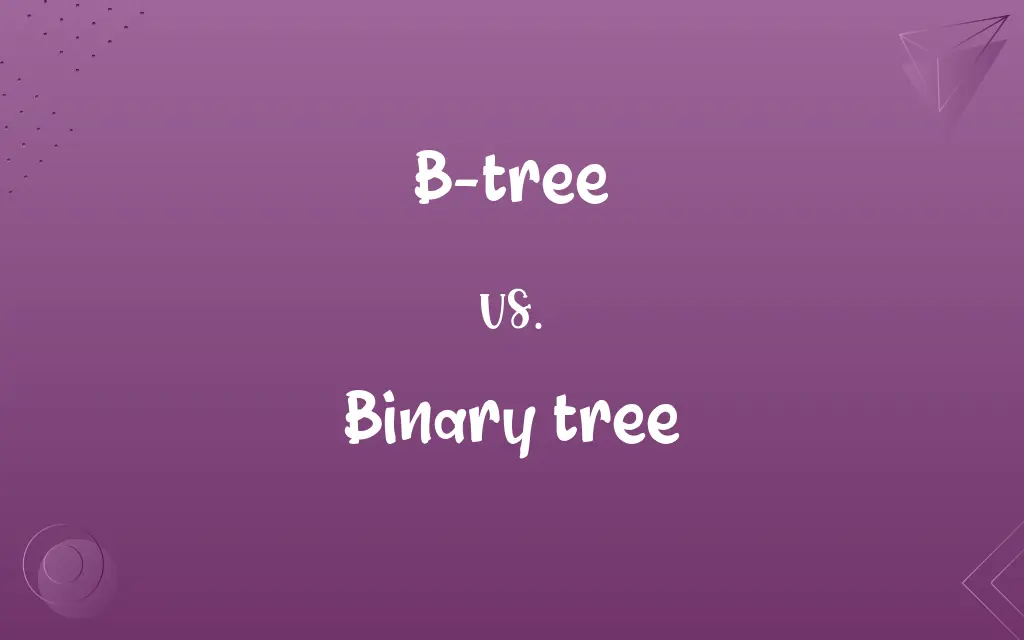
Key Differences
A B-tree is a self-balancing tree data structure that maintains sorted data, ideal for systems that read and write large blocks of data like databases. A Binary tree is a simpler form of tree data structure where each node has at most two children. While B-trees are optimized for systems that read and write large amounts of data to and from secondary storage, Binary trees are generally used in applications where data storage and retrieval operations are less complex.
Shumaila Saeed
Feb 12, 2024
In a B-tree, each node can have more than two children, which reduces the height of the tree and increases efficiency in accessing elements. In contrast, a Binary tree has a strict structure where each node has no more than two children, often referred to as the left and right child. This difference in structure affects their respective performance in data operations; B-trees are more efficient in read/write operations on disk while Binary trees are often used for in-memory data structures.
Shumaila Saeed
Feb 12, 2024
B-trees are widely used in databases and file systems due to their ability to handle large data sets efficiently by reducing the number of disk accesses. Binary trees, however, are more commonly used in applications where data sets are smaller and operations are less data-intensive. The complexity of B-trees in terms of implementation is higher compared to the relatively simpler structure of Binary trees.
Shumaila Saeed
Feb 12, 2024
The balance in a B-tree is maintained through node splits and merges, ensuring that the tree remains optimally balanced for quick search operations. In Binary trees, especially in binary search trees, balancing may be achieved through rotations, but it's not inherently self-balancing like a B-tree. This inherent balance in B-trees makes them preferable for database indexing, where consistent and fast access times are crucial.
Shumaila Saeed
Feb 12, 2024
Lastly, B-trees have a variable number of keys in nodes and variable number of children, which is crucial for minimizing space and maximizing speed in database systems. On the other hand, the simpler structure of Binary trees makes them more suitable for educational purposes, to teach basic tree concepts, and for simpler algorithms where the complexity of B-trees is not required.
Shumaila Saeed
Feb 12, 2024
ADVERTISEMENT
Comparison Chart
Number of Children Per Node
Multiple children per node
At most two children per node
Shumaila Saeed
Feb 12, 2024
Structure Complexity
Complex, self-balancing
Simpler, not inherently self-balancing
Shumaila Saeed
Feb 12, 2024
Height Efficiency
Lower height due to multiple children
Higher height with only two children
Shumaila Saeed
Feb 12, 2024
Data Operation Efficiency
Optimized for large data sets and disk access
Better for smaller, in-memory data sets
Shumaila Saeed
Feb 12, 2024
ADVERTISEMENT
B-tree and Binary tree Definitions
B-tree
Used extensively in database and file system implementations.
Most modern databases use B-trees for data storage.
Shumaila Saeed
Jan 24, 2024
Binary tree
Used for simple hierarchical data representation.
Binary trees are often used to implement basic search algorithms.
Shumaila Saeed
Jan 24, 2024
B-tree
A tree data structure keeping data sorted and allowing efficient insertion, deletion, and search operations.
B-trees are essential in database indexing for efficient data retrieval.
Shumaila Saeed
Jan 24, 2024
Binary tree
Simpler structure compared to B-trees.
Due to its simplicity, binary trees are often taught in introductory computer science courses.
Shumaila Saeed
Jan 24, 2024
B-tree
Balances itself by splitting and merging nodes.
The self-balancing nature of B-trees minimizes search time.
Shumaila Saeed
Jan 24, 2024
ADVERTISEMENT
Binary tree
A tree data structure where each node has at most two children.
In a binary tree, nodes are organized as left and right children.
Shumaila Saeed
Jan 24, 2024
B-tree
Each node contains multiple keys and children.
Nodes in a B-tree can have more than two children, unlike in binary trees.
Shumaila Saeed
Jan 24, 2024
Binary tree
Not inherently balanced like a B-tree.
Balancing a binary tree may require additional algorithms.
Shumaila Saeed
Jan 24, 2024
B-tree
Designed to read and write large blocks of data efficiently.
B-trees are preferred in file systems for handling large files.
Shumaila Saeed
Jan 24, 2024
Binary tree
Ideal for small, in-memory data structures.
Binary trees are suitable for quick, in-memory data sorting.
Shumaila Saeed
Jan 24, 2024
Repeatedly Asked Queries
What is a Binary tree?
A Binary tree is a hierarchical data structure where each node has up to two children.
Shumaila Saeed
Feb 12, 2024
What is a B-tree?
A B-tree is a self-balancing tree data structure used in databases and file systems.
Shumaila Saeed
Feb 12, 2024
Where are B-trees commonly used?
B-trees are used in databases and file systems for efficient data management.
Shumaila Saeed
Feb 12, 2024
What are the typical uses of Binary trees?
Binary trees are used for simpler data structures and basic algorithms.
Shumaila Saeed
Feb 12, 2024
How does a B-tree differ from a Binary tree in structure?
A B-tree can have multiple children per node, while a Binary tree has at most two.
Shumaila Saeed
Feb 12, 2024
How does a B-tree maintain balance?
B-trees balance themselves through node splits and merges.
Shumaila Saeed
Feb 12, 2024
How complex is implementing a B-tree compared to a Binary tree?
Implementing a B-tree is more complex due to its self-balancing nature and multiple children per node.
Shumaila Saeed
Feb 12, 2024
Why are B-trees preferred in databases?
B-trees are preferred for their efficiency in handling large data sets and minimizing disk accesses.
Shumaila Saeed
Feb 12, 2024
Is a Binary tree inherently balanced?
No, Binary trees are not inherently balanced and may require additional balancing methods.
Shumaila Saeed
Feb 12, 2024
Can a Binary tree handle large databases efficiently?
Binary trees are less efficient for large databases compared to B-trees.
Shumaila Saeed
Feb 12, 2024
Can B-trees and Binary trees be used interchangeably?
No, they serve different purposes and are used based on the specific requirements of the application.
Shumaila Saeed
Feb 12, 2024
How do B-trees optimize disk access?
B-trees reduce the tree height and number of disk accesses through their multi-child structure.
Shumaila Saeed
Feb 12, 2024
What is node splitting in B-trees?
Node splitting in B-trees is a process to maintain balance by dividing a node into two when it gets full.
Shumaila Saeed
Feb 12, 2024
Do Binary trees require node splitting?
No, Binary trees do not use node splitting like B-trees.
Shumaila Saeed
Feb 12, 2024
How does tree height affect the efficiency of B-trees and Binary trees?
Lower height in B-trees improves efficiency, while higher height in Binary trees can reduce efficiency.
Shumaila Saeed
Feb 12, 2024
Can both B-trees and Binary trees be used for search operations?
Yes, both can be used for search operations, but B-trees are more efficient for large data sets.
Shumaila Saeed
Feb 12, 2024
What is the maximum number of children for a B-tree node?
The maximum number of children in a B-tree node depends on the specific type of B-tree.
Shumaila Saeed
Feb 12, 2024
Are Binary trees used in database indexing?
Binary trees are not commonly used in database indexing due to their less efficient handling of large data sets.
Shumaila Saeed
Feb 12, 2024
Is it easier to teach Binary trees than B-trees?
Yes, due to their simpler structure, Binary trees are easier to teach and understand.
Shumaila Saeed
Feb 12, 2024
What are the advantages of a Binary tree?
Binary trees are simpler and suitable for educational purposes and smaller data sets.
Shumaila Saeed
Feb 12, 2024
Share this page
Link for your blog / website
HTML
Link to share via messenger
About Author
Written by
Shumaila SaeedShumaila Saeed, an expert content creator with 6 years of experience, specializes in distilling complex topics into easily digestible comparisons, shining a light on the nuances that both inform and educate readers with clarity and accuracy.









